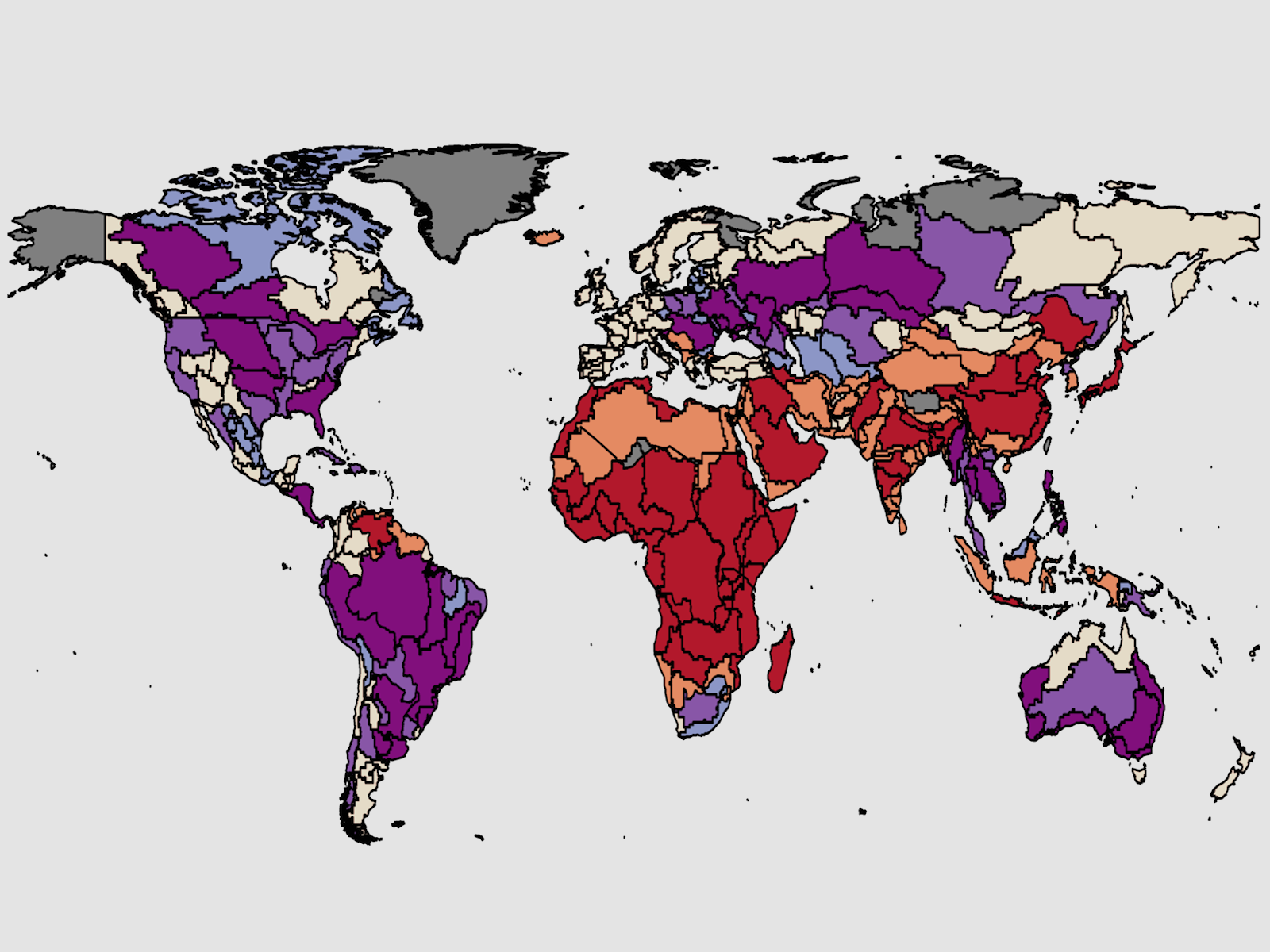Global Agriculture Market Integration is Critical for Modeling Land Use Change
Model results show the high sensitivity of global agroeconomic futures to global market integration

Globally, 27 million hectares of cropland are saved by 2100 when a model accounts for the impacts of global agricultural market integration.
(Image by Xin Zhao | Pacific Northwest National Laboratory)
The Science
Global agricultural trade significantly increased over the past three decades. However, global economic models failed to capture that trade is growing faster than GDP. This is the so-called “missing globalization” issue, which may lead to underestimating gains from market integration. Researchers developed and validated a new approach to address this issue. They show that with higher future integration, more productive countries supply more agricultural products to the world, leading to higher average productivity globally. This results in more food produced with fewer resources (e.g., land, water, etc.).
The Impact
Researchers discovered a strong historical trend of global agricultural market integration. Global economic models have previously struggled to explain this integration, which represents lower trade barriers. This work’s historical validation experiments demonstrated that including a dynamic trend of market integration improved model performance. More importantly, it showed that long-term agroeconomic projection is highly sensitive to the magnitude of global market integration. The approach created in this study provides a remedy to the “missing globalization” issue in global economic models, laying the foundation for developing future globalization scenarios.
Summary
The representations of international trade and global market integration play central roles in long-term global agricultural economic modeling. However, conventional trade models (i.e., the Armington approach) may not adequately account for the dynamic process of market integration. In this study, researchers generalized a conventional trade modeling approach (Armington) to account for global market integration. They built a simple agricultural economic equilibrium model and conducted hindcast experiments to examine historical market integration trends. The results show a significant trend toward global agricultural market integration during 1995 to 2015. This work demonstrates the important implications of allowing the dynamic trend of market integration on estimating trade elasticities. The researchers incorporated future market integration trends into the Global Change Analysis Model. This produced a high sensitivity in long-term agroeconomic projections to future trade and market integration scenarios. The approach developed in this study provides a promising and practical way to consider broader aspects of global market integration (e.g., drivers besides tariff and transportation cost reductions) in evaluating long-term socioeconomic scenarios.
PNNL Contact
Katherine Calvin, Pacific Northwest National Laboratory, katherine.calvin@pnnl.gov
Funding
This research was supported by the U.S. Department of Energy, Office of Science, as part of research in the MultiSector Dynamics program area, Earth and Environmental System Modeling Program.
Published: October 21, 2021
X. Zhao et al., “The role of global agricultural market integration in multiregional economic modeling: Using hindcast experiments to validate an Armington model.” Economic Analysis and Policy, 72, pp.1–17 (2021). [DOI: 10.1016/j.eap.2021.07.007]